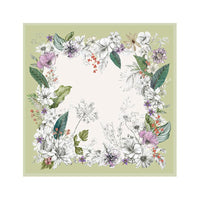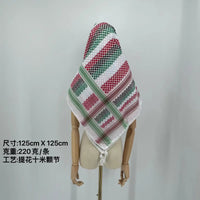Wearing a keffiyeh can carry different meanings depending on the context, intent, and cultural understanding of the wearer. Whether it is considered offensive or not largely depends on these factors. Here's a comprehensive overview to help you navigate this sensitive topic:
1. Understanding the Keffiyeh
Cultural Significance: The keffiyeh is a traditional Middle Eastern headdress, commonly associated with Arab cultures, particularly in countries like Palestine, Jordan, and Syria. It serves both practical purposes—such as protection from the sun and sand—and cultural symbolism.
Symbol of Identity and Resistance: For many, especially Palestinians, the keffiyeh is a powerful symbol of national identity, resistance, and solidarity. It gained global recognition during the Palestinian struggle and has since been adopted in various social and political movements worldwide.
2. Factors Influencing Perception
a. Cultural Appropriation
Definition: Cultural appropriation involves adopting elements of another culture, often without understanding or respecting their significance. This can lead to perceptions of insensitivity or disrespect.
When It Becomes Offensive: Wearing a keffiyeh as a fashion statement without acknowledging its cultural and political significance can be seen as trivializing or commodifying its meaning. This is especially sensitive given its association with struggles for identity and rights.
b. Intent and Context
Respectful Use: If worn with genuine appreciation, understanding, and respect for its cultural background, the keffiyeh can be a way to honor and acknowledge Middle Eastern heritage.
Political Statements: In certain contexts, wearing a keffiyeh may be interpreted as making a political statement, such as showing solidarity with Palestinian causes. Without this intention, it might still be misinterpreted based on appearance alone.
c. Fashion vs. Symbolism
Fashion Industry: The keffiyeh has been popularized in Western fashion, sometimes detached from its original meaning. High-fashion interpretations can sometimes dilute or alter its significance.
Cultural Sensitivity: Designers and wearers should consider the origins and meanings of the keffiyeh to avoid cultural insensitivity. Collaborations with or endorsements by individuals from the cultures where the keffiyeh originates can promote respectful use.
3. Perspectives from Different Communities
Middle Eastern Communities: Some view the adoption of the keffiyeh by outsiders as a form of respect and cultural appreciation, while others see it as appropriation or misrepresentation.
Activist Communities: Among activists, the keffiyeh is often a symbol of solidarity. Wearing it without understanding its significance might be perceived as performative or superficial support.
4. Guidelines for Respectful Wearing
If you choose to wear a keffiyeh, consider the following to ensure it is done respectfully:
Educate Yourself: Understand the history, cultural significance, and current meanings associated with the keffiyeh.
Acknowledge Its Roots: Recognize and respect its origins and the communities for whom it holds deep significance.
Avoid Stereotypes: Steer clear of using the keffiyeh in ways that perpetuate stereotypes or reduce its meaning to mere fashion.
Be Mindful of Context: Consider where and how you are wearing the keffiyeh. In certain settings, it might carry unintended connotations.
5. Alternative Ways to Show Support or Appreciation
Support Authentic Voices: Instead of adopting cultural symbols, support creators and individuals from the culture by purchasing authentic products or amplifying their voices.
Cultural Exchange: Engage in meaningful cultural exchanges that emphasize mutual respect and understanding rather than one-sided adoption.
Conclusion
Wearing a keffiyeh is not inherently offensive, but it requires a thoughtful and respectful approach. Understanding its cultural and political significance, being mindful of the context, and honoring its origins are crucial to ensuring that its use is appropriate and respectful. When in doubt, contact me for guidance and assistance, we can offer valuable advice and help avoid unintentional offense.
If you want to know more about the keffiyeh, please click here!





